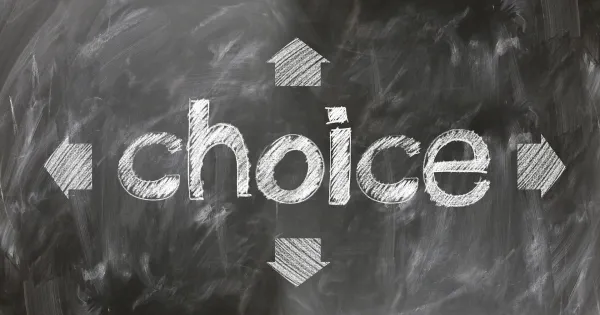
An image of handshake as an analogy of mixed economy.
Mixed Economy
Mixed Economy Definition
Mixed economy refers to an economic system that blends features of both market and planned economies. It is a hybrid system, characterised by a blend of private enterprise and government intervention in economic activity. In a mixed economy, the state and the private sector work together to allocate resources, produce goods and services, and distribute them among the population.
Basic Terms
Let’s go through some basic terms in order to better understand the concept of a mixed economy in economics.
Economy
The economy is an area where goods and services are produced to satisfy the needs and wants of people. Based on the coverage of the geographical area or the scale of economic activity, there are three main types of economies.
Local Economy: A "local economy" refers to economic activity that is confined to a particular geographic area, such as a city, town, or region. For example, the economy of London is a local economy in the UK.
National Economy: A "national economy" refers to the economic activity that takes place within the boundaries of a country. For example, the UK economy is a national economy.
Global Economy: A "global economy" refers to the economic activity that takes place throughout the world.
Similarly, some other types of economies can be regional economy, rural economy and urban economy.
However, it is important to note that we normally use the word ‘economy’ to represent the national economy. So, for the rest of the article, the word ‘economy’ will represent the national economy.
Economic System
The resource allocation mechanism in a country is called an "economic system." An economic system in a country answers the following three basic or fundamental economic questions:
1. What to produce?
2. How to produce?
3. For whom to produce?
These economic questions are related to the allocation of resources in an economy. All economies have to answer these questions. The answers to the above questions differ in different economic systems.
Types of Economic Systems
There are three different types of economies.
Market Economy
Market economy refers to an economic system in which resource allocation decisions are taken by households and firms using price mechanism and there is no government intervention.
It is also called the "free market economy." Its key features are the private ownership of resources, the profit motive, and the price mechanism.
Planned or Command Economy
Planned economy refers to an economic system in which resource allocation decisions are taken by the government. Its key features are government ownership of resources, the motive of collective social welfare, and the use of central planning as a resource allocation mechanism.
Mixed Economy
Mixed economy refers to an economic system in which resource allocation decisions are taken by individuals as well as the government. Its key features are private and public ownership of resources, profit motive as well as the social welfare of citizens, the use of price mechanism and central planning for resource allocation. It is mixture of the features of a free market economy and a command economy.
Characteristics of a Mixed Economy
A mixed economy or a mixed economic system possesses the following features:
Coexistence of the Public and Private Sectors
In a mixed economy, both the public and private sectors coexist, and each has its own role to play. The public sector provides essential services like education, healthcare, defence, and infrastructure, whereas the private sector focuses on generating profits by producing goods and services.
Price Mechanism
The price mechanism, determined by the forces of demand and supply, plays a significant role in a mixed economy. It serves as a signal for producers and consumers to adjust their behaviour. The government intervenes when necessary to prevent market failures and ensure fair competition.
Government Intervention
The government plays an active role in a mixed economy by regulating and supervising the market to ensure that it functions efficiently and serves the common good. It intervenes in the economy to protect private property, correct market failures, redistribute income, and ensure social welfare.
The Degree of Government Intervention
All mixed economies are not the same. They vary in terms of the degree of government intervention and the relative strength of the private and public sectors.
The following diagram shows the degree of government intervention in some countries in terms of low, moderate, and high intervention. Please keep in mind that this diagram is based on subjective assessment and may not accurately show the exact degree of government control. The degree of government intervention can also vary over time and across different sectors of the economy.

Examples of Mixed Economies
Many countries around the world practise a mixed economy. Here are some examples of mixed economy countries:
The United States of America
The United States is a good example of a mixed economy, where the private sector dominates the economy, but the government plays an active role in regulating and supervising it.
Canada
Canada is another example of a mixed economy, with a mix of private companies and government intervention in areas such as healthcare, education, and social welfare programmes.
The United Kingdom
The UK has a mixed economy with a strong emphasis on free-market principles but with significant government intervention in areas such as healthcare, education, and social welfare programmes.
Sweden
In Sweden, the public sector plays a significant role in providing essential services like education, healthcare, and social welfare, while the private sector generates wealth and employment.
India
India is considered a mixed economy, with a combination of market-oriented private enterprise and government intervention in certain sectors, such as agriculture, health care, and education. The government plays a significant role in regulating industries and providing social welfare programs, and it has implemented policies aimed at reducing poverty and inequality.
China
China is considered a mixed economy, with a combination of private sector and state-owned enterprises (SOEs) in certain strategic sectors such as energy, transportation, and telecommunications. The country has experienced significant economic growth over the past few decades, largely due to market-oriented reforms and opening up to international trade and investment. However, the government also retains a strong grip on the economy and is known for its extensive control over the internet, media, and civil society.
France
France is a mixed economy, with a combination of the private sector and government. The government plays a significant role in regulating the economy, and state-owned enterprises are present in industries such as transportation and energy.
Advantages of Mixed Economy
The following are some advantages of a mixed economy:
Economic Efficiency
A mixed economy allows the market to operate efficiently while ensuring that essential services are provided to everyone. This system allows businesses to compete and innovate, resulting in lower prices and higher quality products.
Social Welfare
The government intervention in a mixed economy ensures that social welfare is taken into account. It considers all the costs and benefits that will arise from their decisions. This should mean, for example, that even if a railway line and station would not make a profit in the private sector, they would be maintained by the state if the benefit to society is greater than the cost.
Balanced Growth
A mixed economy encourages both the private and public sectors to grow in harmony, resulting in balanced economic growth. The public sector can invest in infrastructure, education, and healthcare, while the private sector generates employment and wealth.
Merit Goods
The government can encourage the consumption of merit goods that are more beneficial for consumers than they realise by granting subsidies, providing information, or passing legislation.
Demerit Goods
The government can discourage the consumption of demerit goods that are more harmful for consumers than they appreciate by imposing taxes on such products, providing information, or passing legislation.
Public Goods
The government can provide public goods and services, such as national defense, that might not be provided by the private sector.
Price Stability
The government can intervene in the market to stabilise prices. These price controls prevent inflation and deflation.
Environmental Protection
The mixed economy can promote environmental protection by regulating industries that cause pollution and encouraging the use of clean energy.
Economic Freedom
The mixed economy allows individuals to start their businesses and make a profit while ensuring that their activities do not harm others.
Monopoly Power
Government regulation can prevent monopolies from dominating the market and exploiting consumers.
Economic Stability
The mixed economy can provide economic stability by balancing the interests of different sectors and minimising economic fluctuations.
Vulnerable Groups
The government can help vulnerable groups, ensuring that they have access to basic necessities. It can also create a more even distribution of income, by taxing the rich at a high rate.
Innovation
The mixed economy provides an environment where businesses can innovate and compete, resulting in the development of new products and services.
Disadvantages of Mixed Economy
The following are some disadvantages of a mixed economy:
Inefficiency
The government intervention in a mixed economy can lead to inefficiencies and bureaucracy. It can result in higher costs and lower quality services.
Political Interference
The mixed economy can be vulnerable to political interference, leading to corruption. It can also lead to regulatory capture, where the industry controls the regulatory body responsible for overseeing it.
Inequality
A mixed economy can also result in inequality, as government intervention may favour certain groups over others.
Market Distortion
Government intervention can distort the market, leading to misallocation of resources and inefficiencies.
Lack of Incentives
Government intervention can reduce the incentives for businesses to innovate and compete, leading to lower economic growth.
Higher Taxes
The government may need to raise taxes to fund public goods and services, leading to a higher tax burden on individuals and businesses.
Loss of Consumer Sovereignty
The government may limit consumer choices by regulating industries or providing public goods and services.
Conclusion
A mixed economy is a complex system that blends elements of market and planned economies. It allows the market to operate efficiently while ensuring that essential services are provided to everyone. The government plays an active role in regulating and supervising the market to ensure that it serves the common good. The mixed economy has its advantages and disadvantages, and it is up to policymakers to strike a balance between the two.


